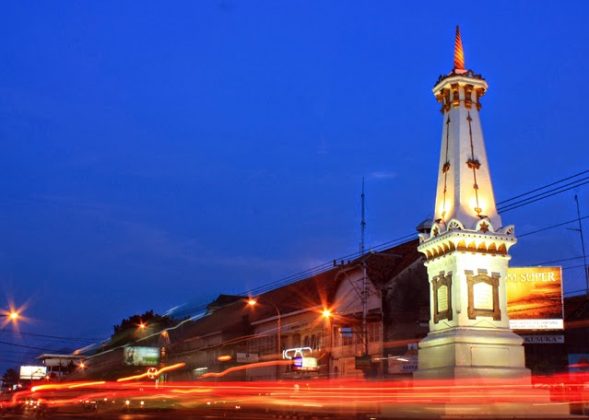Usually a monumen was built to become a symbol of a region or to become the characteristic of a region, so does Tugu Jogja which becomes the one of the main icons of Yogyakarta. This Tugu Jogja is located in the middle of the junction among Mangkubumi street, Jendral Sudirman street, A.M Sangaji street, and Diponegoro street. Because of its various historical moments ever happened in Jogja, Tugu Jogja becomes the historic icon of Yogyakarta city.
The monument that was built in 1755 by Hamengkubuwono I, the former of Keraton Yogyakarta has symbolic values and also becomes the one of the point of imaginary axis which connects the Sea South, Kraton Jogja, and Gunung Kidul. The sultan uses this tugu or monument as a direction mark to face Mount Merapi once he did meditation.
Formerly this building represents the spirit of the society and the sovereign or called as Manunggaling Kawula Gusti to fight against the invaders. This unity spirit or called goling gilig can be seen clearly in tugu construction where it has cylinder form of pole (gilig) and round shape on the top of this monument. Those become the reason why this monument is called Tugu Golong-Gilig. The existence of this tugu becomes also the direction mark to Sri Sultan Hamengku Buwono 1 to have meditation facing the Mount Merapi. Firstly the building of Tugu Jogja has a cylinder pole that’s look like a cone; in addition there were fences surrounded this monument. The top of this monument had round shape. The height of this monument was 25 meters high.
However, on June 10th 1867, because of the earth quake, the construction building of this monument was ruined. It made the monument construction really change in 1889. When the Dutch governments renovate a whole construction of this monument, at that time it has square shape where we could find the inscription on each side to present who was involved in this monument renovation. Then It didn’t have round shape anymore on its top, but a cone shape. The height of this monument also became shorter than before. It was only 15 metres high. Consequently this monument was called Tugu Pal Putih as the Dutch tactics in breaking the unity spirit between local people and the king, but it didn’t work at all.




